Ludwig Appeltans has included a circular economy into the design for the nature-based permaculture community he created on the Isle of Skye. If you want to hire him or learn from him, please feel free to join the Virtual Village.
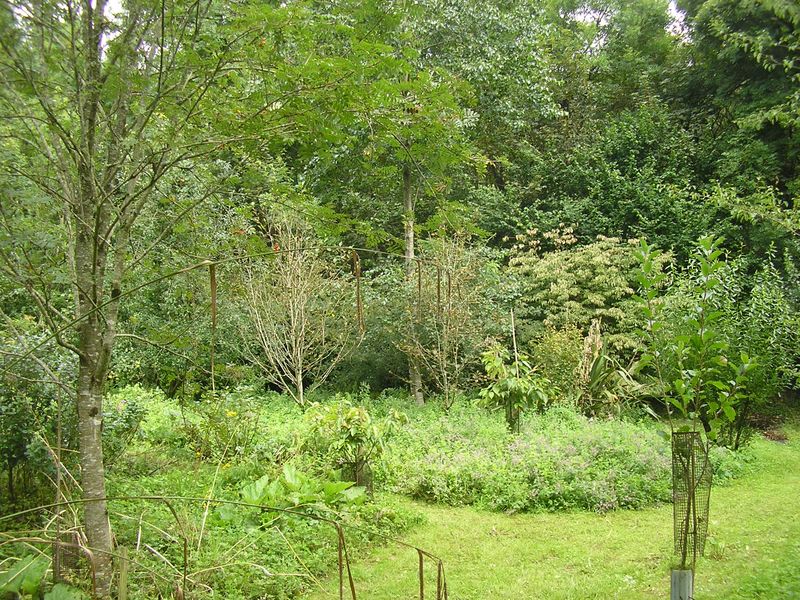
A forest garden is a garden modelled on a natural woodland.
If you leave your garden alone and do nothing in it for a long time, it turns into a forest; a forest that is unfortunately unlikely to provide you with the food you need. But if you work with nature in the same direction by turning your garden into a food forest by copying the principles of a natural forest, you will have food in abundance. That is forest gardening.
Definitions of Forest Gardening
Forest gardening is a food production and land management system based on replicating woodland ecosystems, in which trees and plants have been replaced by fruit and nut trees, bushes, shrubs, herbs and vegetables which have yields directly useful to humans.
A forest garden is a designed agronomic system based on trees, shrubs and perennial plants. These are mixed in such a way as to mimic the structure of a natural forest – the most stable and sustainable type of ecosystem in this climate.
History of Forest Gardening
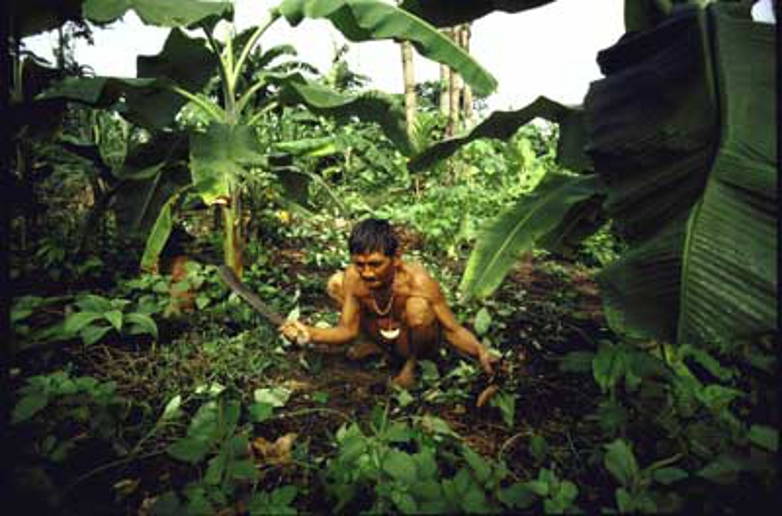
Many indigenous cultures have a long history of growing food in a way that resembles a forest. Japan also has an ancient tradition in forest gardens. Geoff Lawton recently discovered one in Morocco that is 2000 years old. Forest Gardening is nothing new. Only for ‘western’ cultures that have grown used to monoculture food production systems.
Robert Hart introduced forest gardening in Wenlock Edge in Shropshire in the UK in the 1970′s.
Martin Crawford is arguably the most well known forest gardener in the UK. He is the director of the Agroforestry Research Trust in Devon. You can watch a video of him here.
Benefits of a Forest Garden
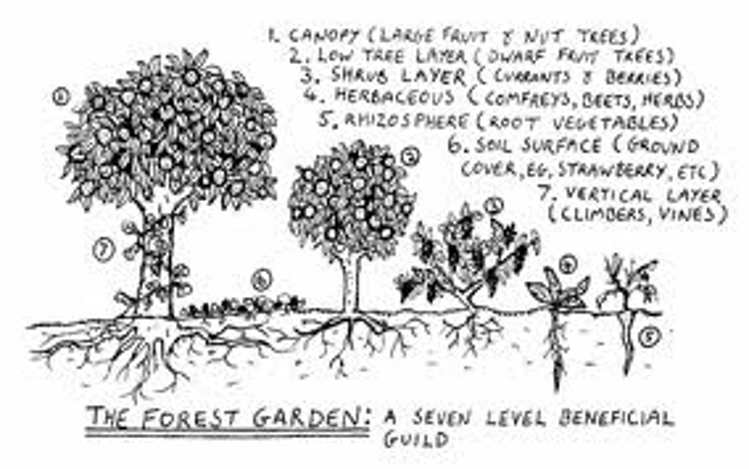
-
- It makes maximum use of space by growing plants in up to 7 layers (stacking) and by using succession.
- Canopy: Trees and shrubs are the backbone of the forest garden. The canopy consists of the tallest of these. Fruit and nut trees are a great edible choice.
- Under story (low-tree , shade tolerant tree layer): Dwarf fruit and nut trees.
- Shrub Layer: Woody plants such as raspberries.
- Herbaceous Layer: Herbs, self seeding annuals and perennial vegetables.
- Vertical Layer: Climbing plants and vines.
- Ground layer: Ground cover, creepers, no more than half a foot tall.
- Rhizosphere: Root plants such as carrots, beets, and Jerusalem artichoke
- It makes maximum use of space by growing plants in up to 7 layers (stacking) and by using succession.
Some people count an 8th layer and 9th:
- 8. Succession: Growing plants that make use of sunlight at different times in the season, on the same space.
- 9. The Mycelium Layer, a network of connection that transports information and nutrients between the elements.
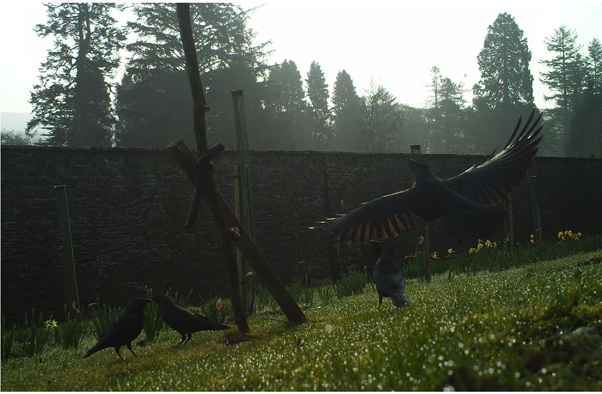
-
-
- It eliminates the need for insecticides by choosing plants that attract natural predators to control pests, by choosing the best companion plants, by diversifying lots of different species and by choosing plants with multiple uses.
- It eliminates the need for artificial fossil fuel based fertilisers by growing nitrogen fixing plants, the best composting plants and refining composting techniques.
- It eliminates the need for weed killers and limits the need for laborious weeding by growing ground covering and allelopatic plants and green manures for mulch. Other ‘weeds’ are a useful resource of nutrients.
- It is a low maintenance technique because of the choice of perennials and self-seeding annuals.
- It increases the beauty of the garden by allowing birds, insects and amphibians to play their essential role of pest control, fertilisation and spreading seeds.
-
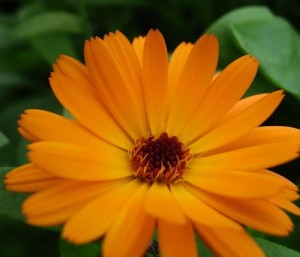
-
-
- No need to drain land and destroy a naturally wet habitat. Shady and wet places that are unsuitable in conventional farming techniques produce successful crops in a forest garden setting.
- A high diversity in the production makes sure there is fresh food in the garden all year round and increases the food security in a chaotic climate.
- It brings our carbon footprint within sustainable levels by minimising and ‘ideally’ eventually eliminating the need for fossil fuels and by growing renewable resources.
-
Earth Ways started a Forest Garden at the Penninghame Estate in Dumfries & Galloway, Scotland. You can see the photos of the start of it in the gallery.
Earth Ways is now managing and creating a forest garden on the Isle of Skye in Scotland.
You can read more about that here.
Ludwig Appeltans has included a circular economy into the design for the nature-based permaculture community he created on the Isle of Skye. If you want to hire him or learn from him, please feel free to join the Virtual Village.
